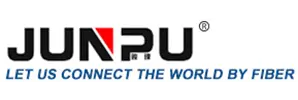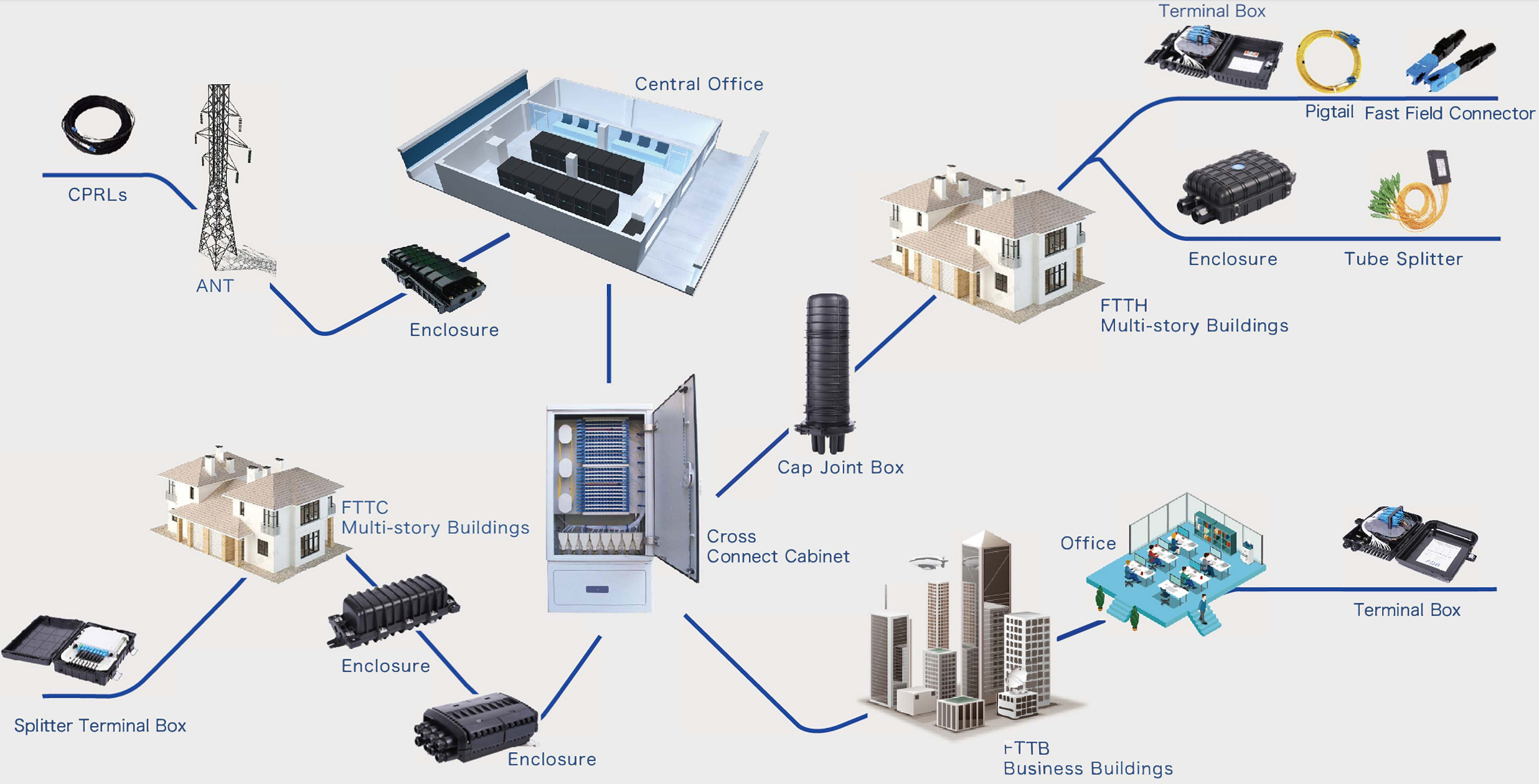
-
Home
-
Products
- Solution
- WHY JUNPU
- Services
- Resources
- News
- Contact Us


Durability: Fiber optic box enclosures are built to withstand harsh environmental conditions, providing protection for the sensitive fiber optic components inside.
Protection: These enclosures offer secure housing for fiber optic cables, connectors, and splice trays, safeguarding them from physical damage, dust, moisture, and other contaminants.
Cable Management: Fiber optic box enclosures provide organized and efficient cable management solutions, with features like cable entry ports, splice organizers, and routing options to ensure neat and proper cable routing and organization.
Accessibility: They are designed with easy access in mind, allowing convenient entry for installation, inspection, maintenance, and troubleshooting. The enclosure may feature hinged doors, removable panels, or slide-out trays for easy access to the internal components.
Connectivity Options: Fiber optic box enclosures support various connectivity options, including adapters, connectors, and splice trays, providing flexibility in connecting, terminating, and managing fiber optic cables.
Scalability: Many fiber optic box enclosures are designed to be expandable, allowing for future capacity upgrades as network demands grow. Additional modules or panels can be added to accommodate more fiber connections.
Security: Some fiber optic box enclosures come equipped with locking mechanisms or security features to prevent unauthorized access, ensuring the integrity and security of the network connections.
Compatibility: These enclosures are designed to accommodate different types of fiber optic connectors, adapters, and cable types, ensuring compatibility with a wide range of fiber optic components.
Versatility: Fiber optic box enclosures are available in various sizes and configurations to suit different installation environments, including wall-mount, rack-mount, or pole-mount options, enabling their use in diverse applications.
Weather Resistance: Fiber optic enclosures for outdoor or harsh environments often have weatherproof features, protecting the internal components from extreme temperatures, moisture, UV radiation, and other environmental factors.
The price of the fiber termination box can vary depending on factors such as size, capacity, materials, and additional features. It is essential to consider the cost in relation to the specific requirements and specifications of the project to ensure the best value and performance.
Regular Inspection: Conduct routine visual inspections of fiber optic boxes to check for any signs of physical damage, loose connectors, or contaminants that may affect signal quality.
Cleaning: Clean fiber optical fast connector using lint-free wipes and alcohol-based cleaning solutions to remove dirt, dust, or oil that may accumulate on the surface. Avoid touching the polished ends of connectors with bare hands.
Cable Management: Ensure proper cable management within the fiber optic box, organizing and securing cables to prevent strain, bending, or twisting that may lead to signal loss or damage.
Splice Tray Maintenance: Inspect and clean splice trays regularly to remove debris or excess fiber fragments that can impact splice quality or interfere with connections.
Environmental Conditions: Ensure the fiber optic box is located in an environment with proper temperature and humidity control. Protect it from excessive heat, moisture, dust, or corrosive substances that can degrade performance.
Labeling and Documentation: Maintain accurate documentation and labeling of fiber connections within the box for easy identification and troubleshooting during maintenance or repairs.
Testing and Monitoring: Regularly test fiber optic connections and perform optical power measurements to verify signal strength and identify any potential issues or degradation.
Repairs and Replacements: Promptly address any identified problems or damaged components by replacing faulty connectors, cables, or damaged splice trays to maintain optimal performance.
Firmware and Software Updates: Stay updated with the latest firmware or software releases for any integrated components or management systems within the fiber optic box enclosure.
Proactive Maintenance: Implement a proactive maintenance schedule that includes regular cleaning, testing, and inspection to identify and resolve any potential issues before they become major problems.
Polyethylene (PE): Polyethylene is a lightweight and corrosion-resistant plastic used for outdoor fiber optic enclosures. It can withstand harsh weather conditions, UV radiation, and chemicals.
Polycarbonate (PC): Polycarbonate is a durable and impact-resistant plastic commonly used for indoor and outdoor enclosures. It offers good optical clarity and is often used in applications where visibility of the fiber connections is necessary.
Aluminum: Aluminum enclosures are lightweight, corrosion-resistant, and suitable for indoor and outdoor applications. They offer good shielding against electromagnetic interference (EMI) and are preferred in high-performance installations.
Stainless Steel: Stainless steel enclosures provide superior durability and corrosion resistance compared to aluminum. They are commonly used in rugged outdoor environments or industrial settings.
Powder-Coated Steel: Powder-coated steel enclosures offer strength, durability, and resistance to corrosion. They are often used in industrial or utility applications.
Fiberglass Reinforced Plastic (FRP): FRP enclosures are lightweight, non-conductive, and resistant to corrosion, making them ideal for harsh outdoor environments or areas with high electromagnetic interference.
Carbon Fiber: Carbon fiber composites provide high strength, low weight, and excellent resistance to environmental hazards. They are commonly used in aerospace or military applications where weight reduction is essential.
Polyvinyl Chloride (PVC): PVC enclosures are lightweight, cost-effective, and resistant to moisture and chemicals. They are suitable for indoor installations or areas with low environmental exposure.
 Call us on:
Call us on:  Email Us:
Email Us:  Wanhua Science and Technology Park, No. 528, Shunfeng Road, Donghu Street, Linping District, Hangzhou City, Zhejiang Province
Wanhua Science and Technology Park, No. 528, Shunfeng Road, Donghu Street, Linping District, Hangzhou City, Zhejiang Province